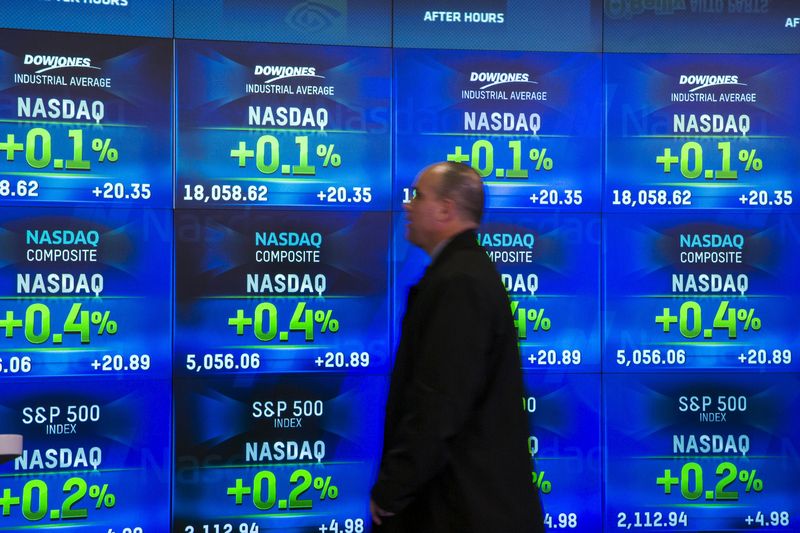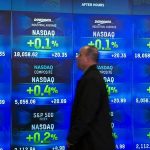
Fed Chair Jerome Powell retained a cautious stance towards future rate cuts in a speech Wednesday, suggesting that the U.S. central bank will continue to study more data before a rate-cutting cycle is started.
“Recent readings on both job gains and inflation have come in higher than expected,” Powell said in a speech to the Stanford Graduate School of Business.
While policymakers generally agree that rates can fall later this year, he said this will happen only when they “have greater confidence that inflation is moving sustainably down” to the Fed’s 2% target.
Recent strong economic numbers have resulted in the whittling away of U.S. rate cut expectations – rates markets no longer fully expect a move in June or 75 basis points of easing in total this year.
This readjustment was helped by comments from Atlanta Fed President Raphael Bostic, a known hawk, who said rates should likely not be reduced until the fourth quarter of this year, with only one cut likely in 2024.
“We’ve seen inflation kind of become much more bumpy,” Bostic said. “If the economy evolves as I expect, and that’s going to be seeing continued robustness in GDP and employment, and a slow decline in inflation over the course of the year, I think it will be appropriate for us to start moving down at the end of this year, the fourth quarter.”
U.S. stock futures rose Thursday, rebounding after recent losses ahead of more labor market economic data.
By 04:00 ET (08:00 GMT), the Dow futures contract was 110 points, or 0.3%, higher, S&P 500 futures climbed 20 points, or 0.4%, and Nasdaq 100 futures rose by 90 points, or 0.5%.
The blue chip Dow Jones Industrial Average fell over 40 points, or 0.1%, its third straight losing session, while the broad-based S&P 500 index inched up 0.1% and the tech-heavy Nasdaq Composite gained 0.2%.
Wednesday’s strong private payrolls data from the ADP, which saw companies add 184,000 workers in March, added to the recent healthy economic releases which have seen the likelihood of a cut at the Federal Reserve’s June meeting reduced to around 62%, down from about 70% last week, according to the CME FedWatch Tool.
There’s more data to digest Thursday, including the weekly initial jobless claims, ahead of Friday’s widely-watched official monthly payrolls report.
Walt Disney’s shareholders have voted in favor of retaining the bloc of current board members, ending a prolonged battle for board seats with activist investors including Nelson Peltz’s hedge fund, Trian Fund Management and Blackwells Capital.
This result paves the way for chief executive Bob Igor to continue with the turnaround of Walt Disney (NYSE:DIS), including restructuring the company into three separate divisions, reinvigorating its film and television franchises and seeking to make its streaming business profitable.
“With the distracting proxy contest now behind us, we’re eager to focus 100% of our attention on our most important priorities: growth and value creation for our shareholders and creative excellence for our consumers,” Disney Chief Executive Bob Iger said in a statement.
Disney’s stock price is still far below its March 2021 peak, but it has climbed over 30% since the start of the year January as investors have embraced the transformation at the entertainment giant.
Tesla (NASDAQ:TSLA) is set to study sites in India for a proposed $2 billion to $3 billion electric car plant, according to a report in the Financial Times, focusing on the Indian states that have automotive hubs such as Maharashtra, Gujarat and Tamil Nadu.
A move into the world’s most populous country would come at an opportune time given EV demand is slowing in its main markets of the U.S. and China as competition heats up.
Tesla reported earlier this week that deliveries in the first quarter fell 8.5% from the year-ago quarter and approximately 20% from the fourth quarter, representing the first year-over-year decline since the second quarter of 2020.
Fans of the company will see this downturn as due to industry headwinds, but Per Lekander, a hedge fund manager, said “this was really the beginning of the end of the Tesla bubble.”
Lekander, a managing partner at Clean Energy Transition, has been shorting the electric vehicle company since 2020, added Tesla was “probably, arguably the biggest stock market bubble in modern history.”
“I actually think the company could go bust,” he added.
Oil prices slipped lower Thursday, but remained near five-month highs after major producers kept output cuts in place and with supply disruptions continuing.
By 04:00 ET, the U.S. crude futures traded 0.1% lower at $85.31 a barrel, while the Brent contract dropped 0.1% to $89.26 per barrel.
“Brent is facing some resistance at the US$90/bbl level, with it unable to break above it so far,” ING analysts said, in a note.
The Organization of Petroleum Exporting Countries and allies, a group known as OPEC+, decided to maintain its current band of production cuts during a Wednesday meeting, presenting a tight outlook for crude in the near-term.
Additionally, a storm of geopolitical factors, including fears of a broader conflict in the oil-rich Middle East and Ukrainian attacks on key Russian refineries, heralded more global supply disruptions.
Further gains in crude were held back by mixed readings on U.S. inventories, especially as official data showed an unexpected build in overall crude stockpiles.
The build came as U.S. production remained near record highs – a trend that is expected to somewhat offset a tight outlook for oil markets.
That said, U.S. fuel demand was also seen rebounding from winter lows, with gasoline inventories seeing a bigger-than-expected draw in the past week. The trend pointed to robust demand in the world’s largest fuel consumer.
To read the full article, Click Here

